Characterised by its fragrant crust and a moist, creamy interior, Shokupan’s history extends back to the 1880s in Yokohama where, as the story goes, a British baker began making the soft bread for expats and naval guards.
Since then, it has continued to rapidly grow in popularity and these days is considered a staple of Japanese cuisine.
Quentin Berthonneau from Oji House shows us how to make the famous Japanese white loaf recipe he first developed in 2019 and improved in 2024.
 About Quentin Berthonneau:
About Quentin Berthonneau:
Quentin Berthonneau brings a wealth of cross-cultural experience as a French-born baker and consultant with over 15 years of experience spanning two continents. After establishing himself in French artisanal bakeries, Quentin found his home in Australia where he founded the successful ventures Q le Baker and Shokupan, notably pioneering an innovative sourdough version of Japanese milk bread.
Following a pivotal moment of near-burnout in 2019, Quentin embraced a new business philosophy centred on sustainability, joy and wellbeing – values that now define his approach to baking.
His exceptional skill and expertise with sourdough baking led him to teach at France’s prestigious Ecole internationale de boulangerie. In a testament to his panettone mastery, Quentin placed 6th at the 2021 Panettone World Cup and subsequently coached the French national team.
Quentin’s newest venture, OJI House, launched in Melbourne in 2024, where he combines his passion for baking with his commitment to joyful, ethical business practices. When he’s not training for the Championship or consulting, Quentin can be found savouring his other joys such as food, nature, music, sport and art.
Shokupan 2.0
WHAT YOU NEED
| First dough ingredients | Base recipe in gm | |
| Strong white flour | 1000 | G |
| Water | 550 | G |
| Panettone starter PH 4,10-4.3, X2,5-3 in volume | 300 | G |
| Sugar | 280 | G |
| Butter | 220 | G |
| Total | 2350 | G |
| Tanghzong ingredients | Base recipe in gm | |
| Strong white flour | 100 | G |
| Water or Milk | 500 | G |
| Total | 600 | G |
| Second dough ingredients | Base recipe in gm | |
| First dough, quadrupled in volume, volume X4-5, PH 4.8-5.2 | 2350 | G |
| Strong white flour | 1250 | G |
| Malt (optionnal) | 20 | G |
| Water | 250 | G |
| Tanghzong (cooled) | 550 | G |
| Milk | 250 | G |
| Sugar | 80 | G |
| Salt | 35 | G |
| Bassinage water | Optionnal | G |
WHAT TO DO
You will need to start your dough up to 16 hours in advance, as it will need a long ferment period.
First dough
Mix the water, flour and starter for a few minutes.
Slowly add half of the sugar and wait for the gluten to slightly develop before gradually adding the rest of the sugar.
Once the dough looks smooth, add the butter and mix well.
Let ferment at 26-28ºC for 14-16h or until X4-5 in volume.
Tanghzong
Tanghzong is a mixture of flour and liquid – typically water or milk – that is brought up to temperature until it thickens and becomes almost paste-like. The addition of tanghzong can result in a softer, fluffier and longer-lasting loaf. Have your tangzhong ready to go before you begin your second dough.
Mix in a pot both ingredients and bring it to 65ºC or until it thickens.
Keep at room temperature for next day use or store in cool room to keep for 5 days.
Second dough
Once your first dough has quadrupled in size – approximately 14-16 hours – and your tanghzong is ready and at room temperature, prepare for your second dough.
Mix all ingredients together except the water, add some of it if it seems to stiff. Mix until the dough looks smooth and well developed, using second speed.
Add the water in second speed and create a very extensible dough.
Let ferment 30/40min in bulk and divide at the desired weight.
Preshape in balls and let rest for 20/30min, covered.
Shape using the Japanese method and put in moulds.
Let prove until about 1cm from the top.
Bake at 180ºC-210ºC until golden and internal temperature reaches 90ºC
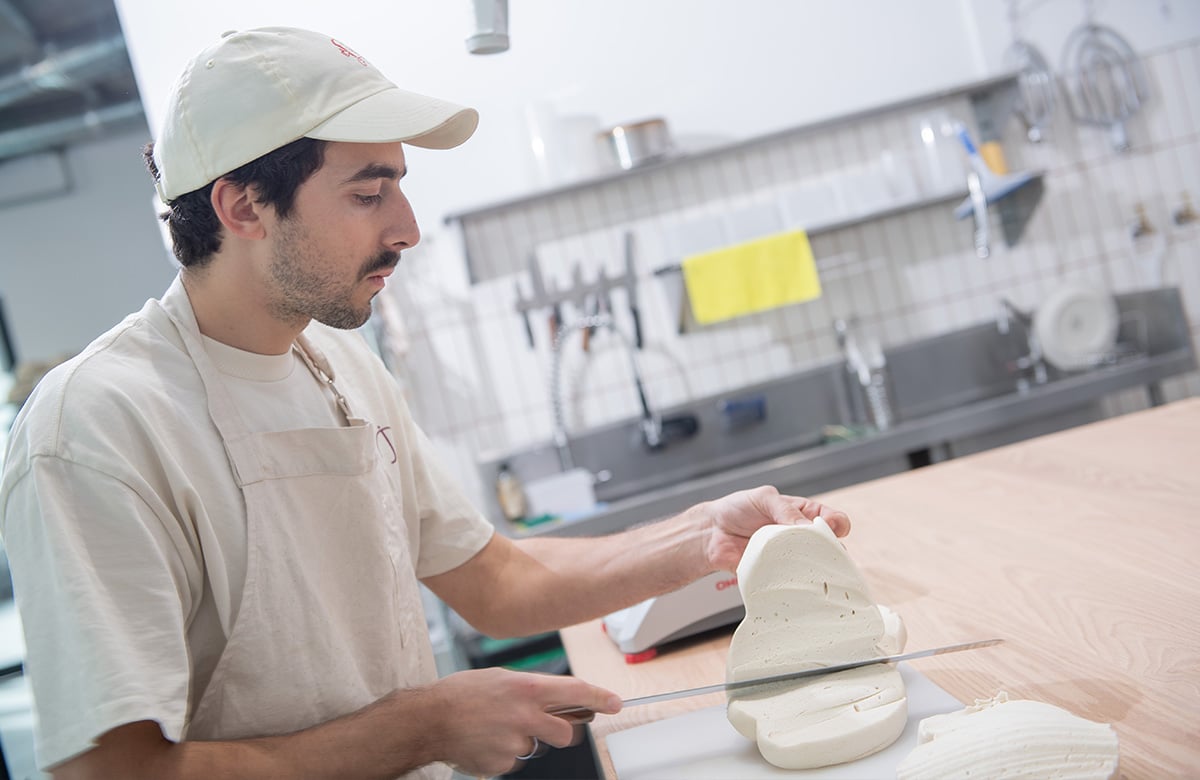
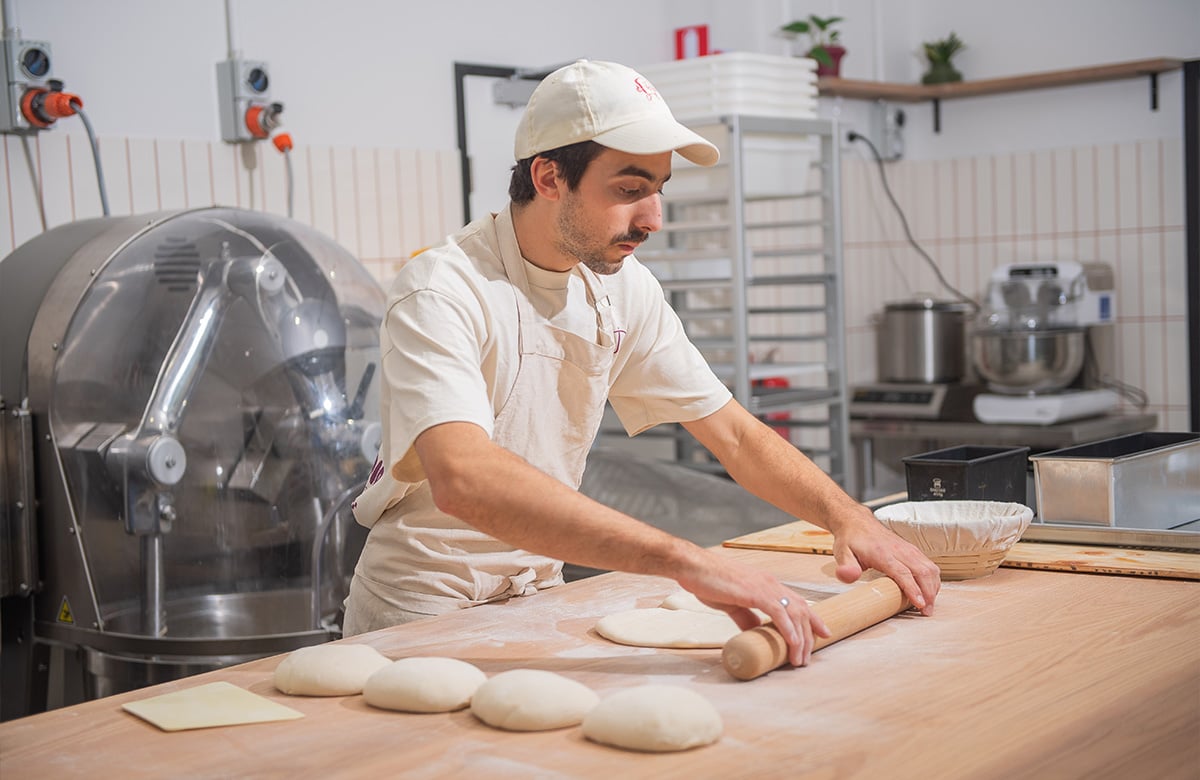
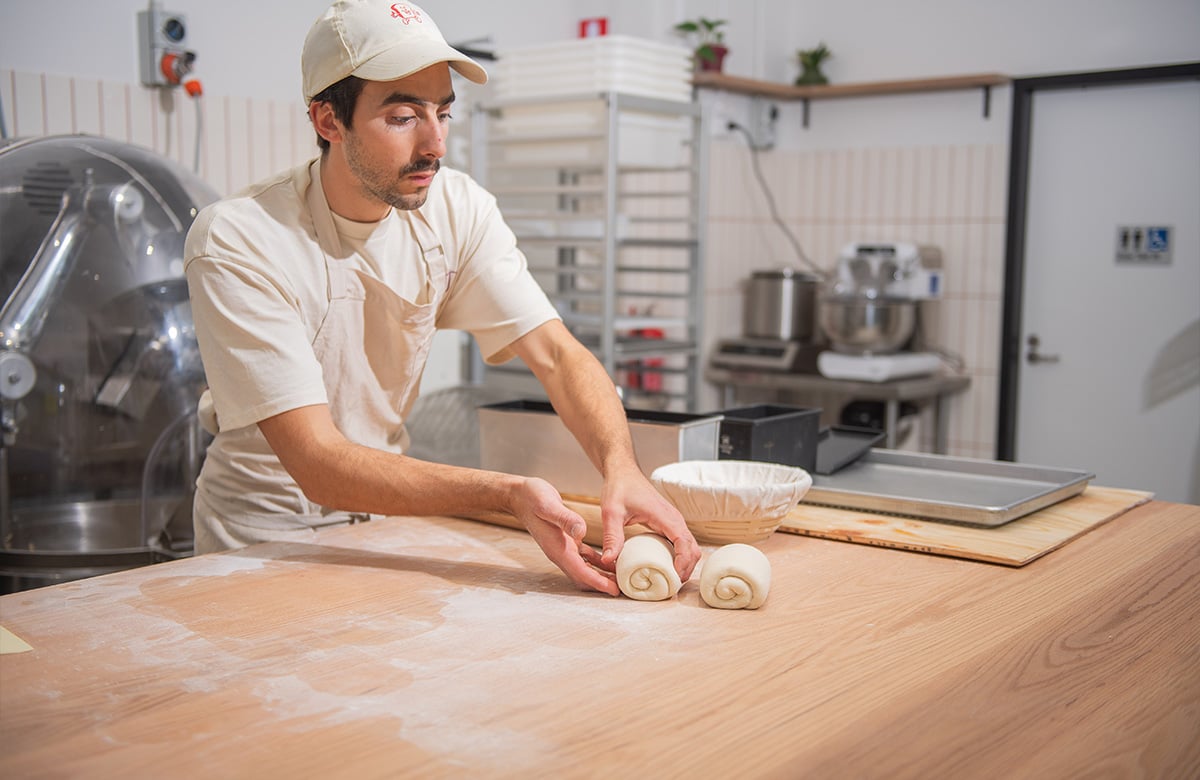
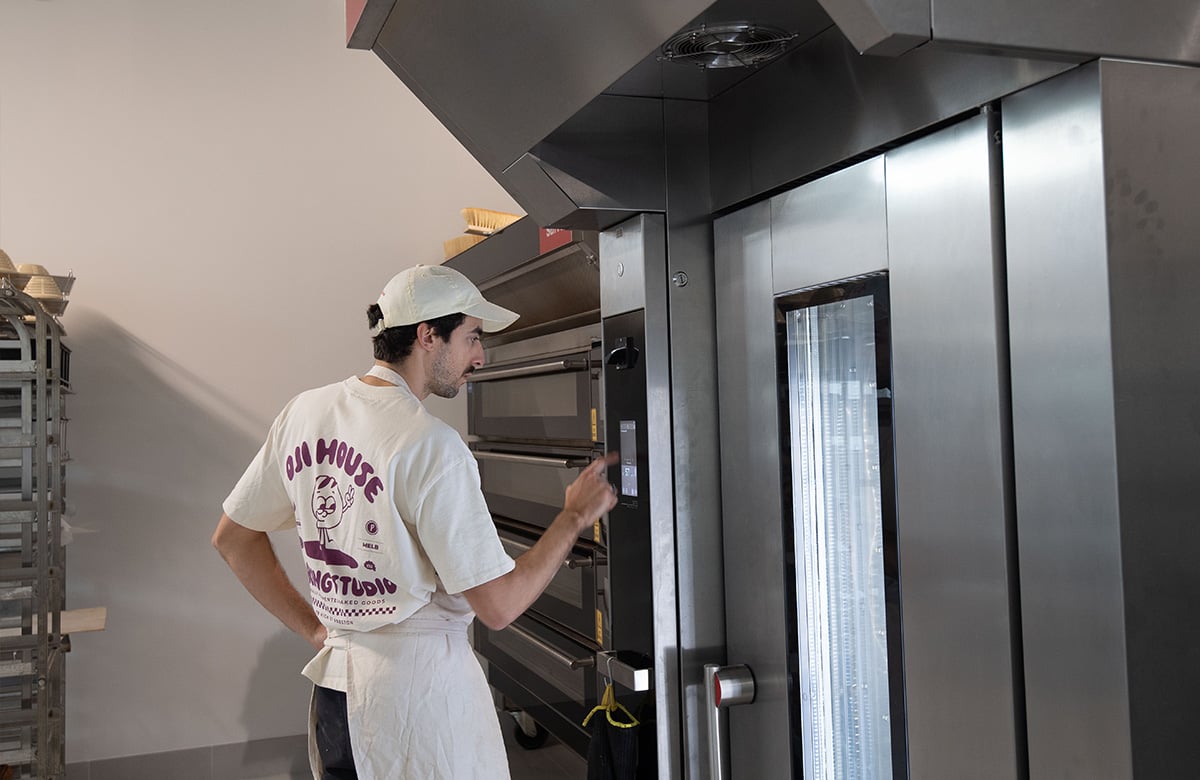
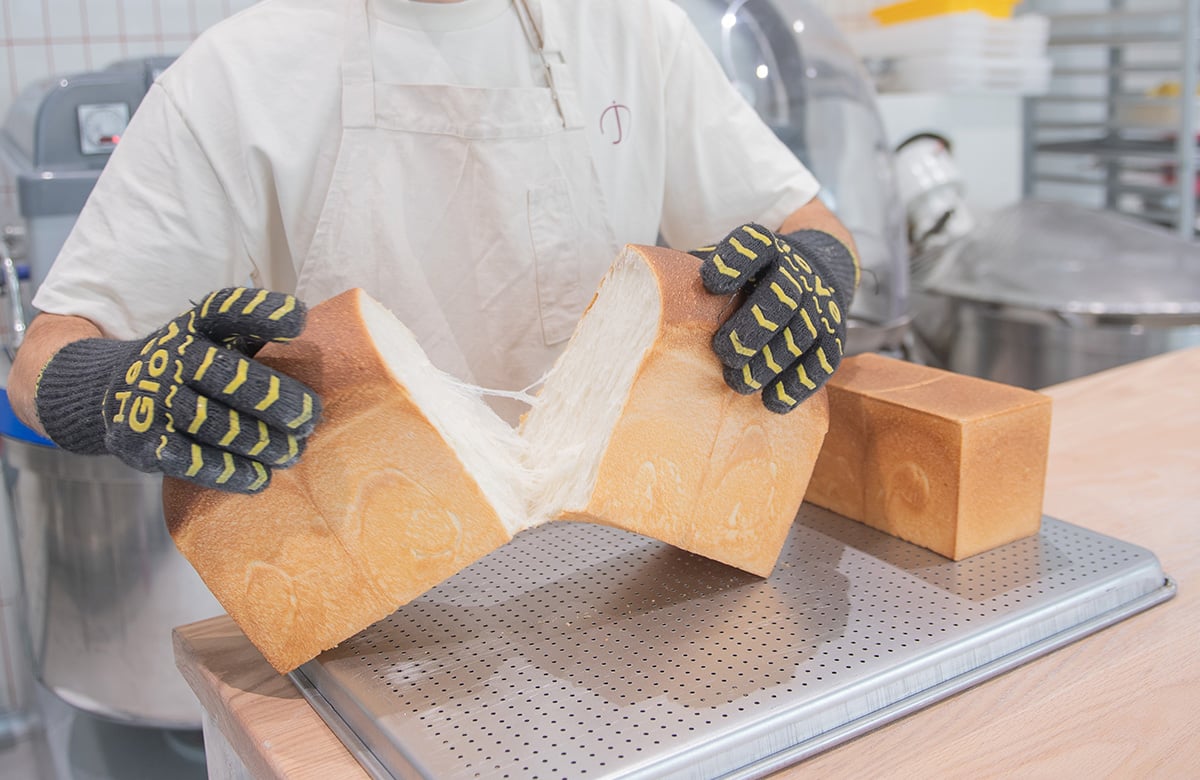
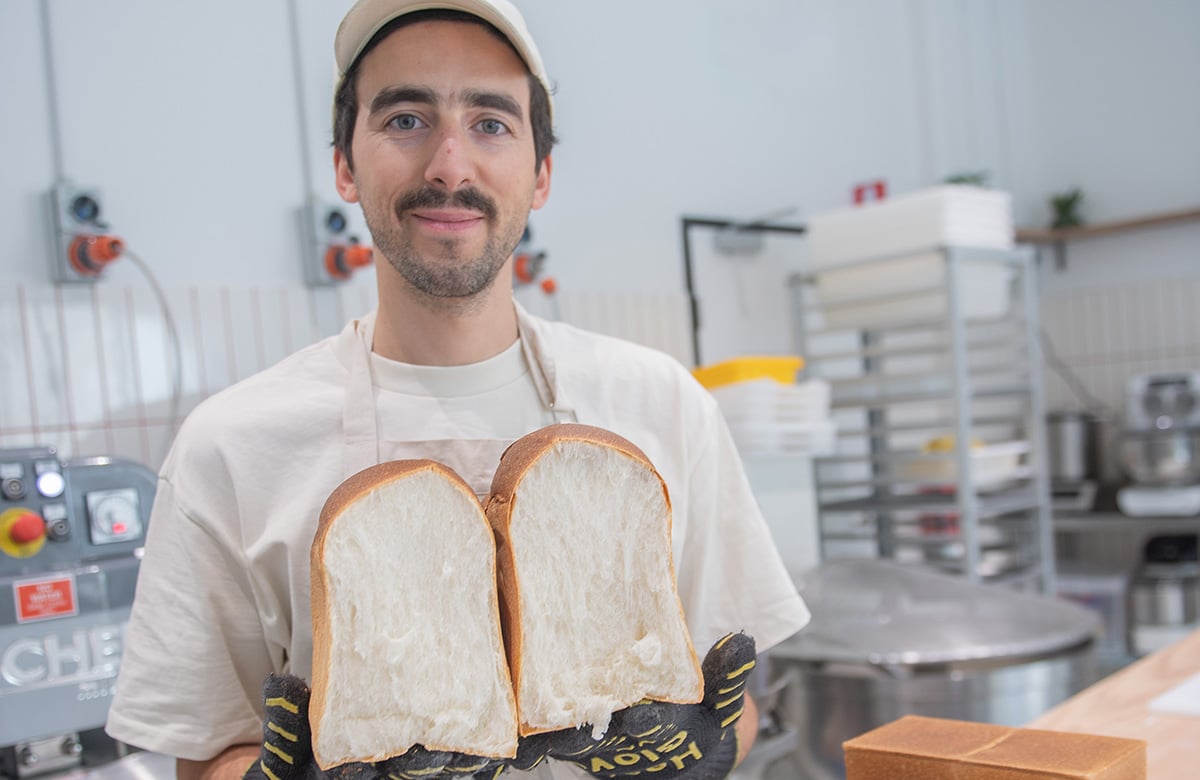

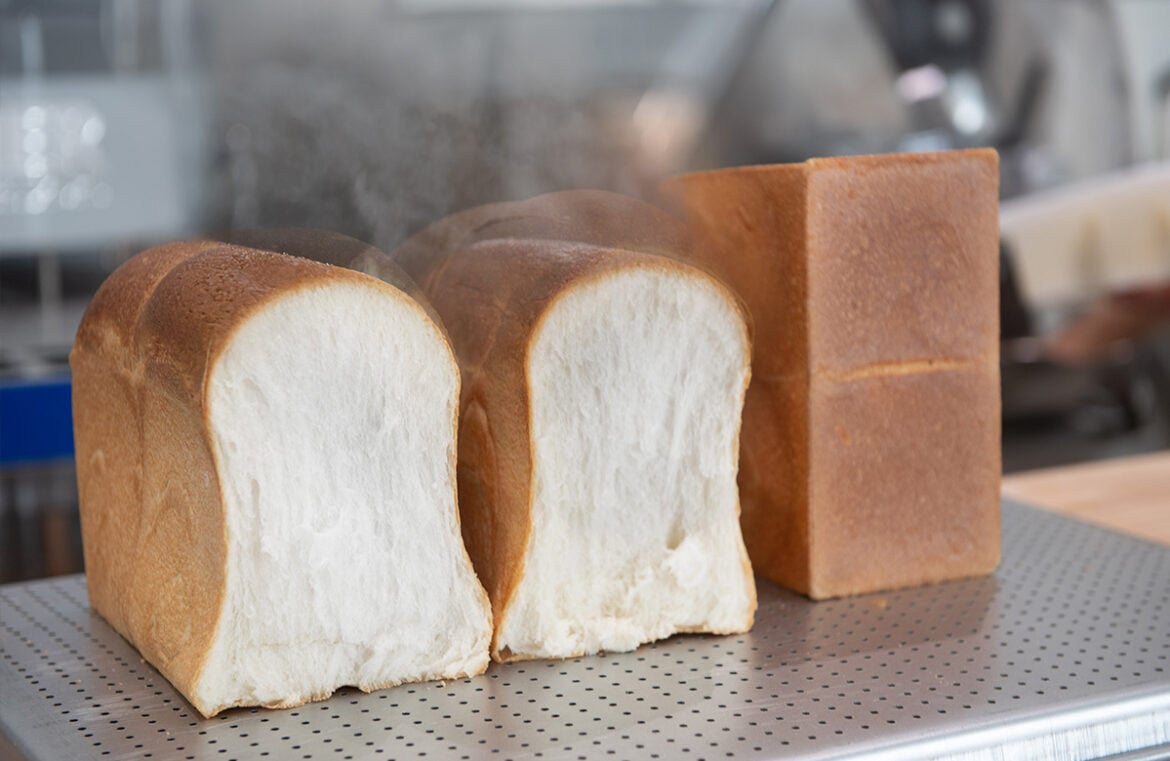
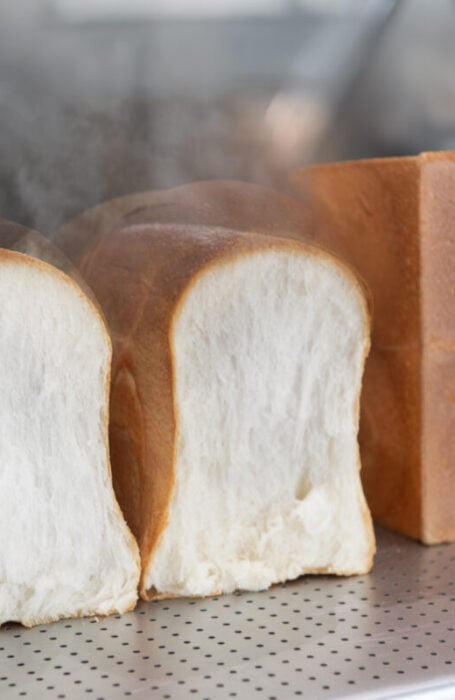
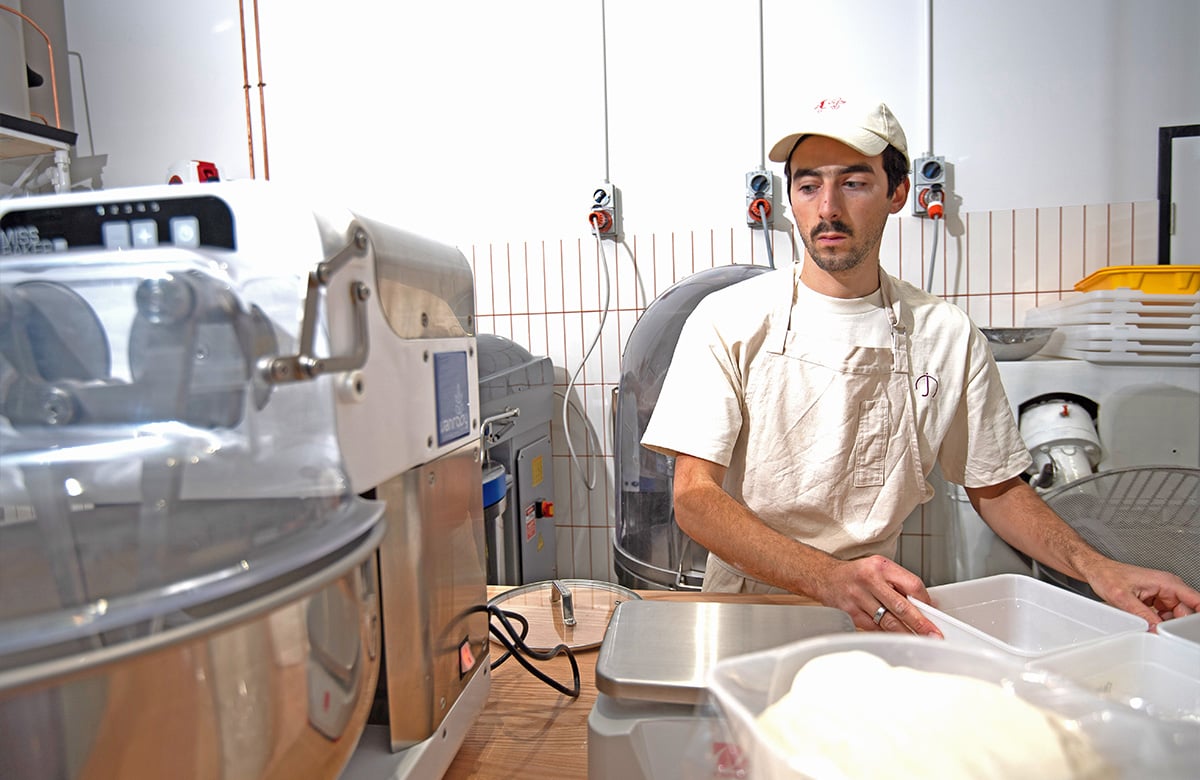
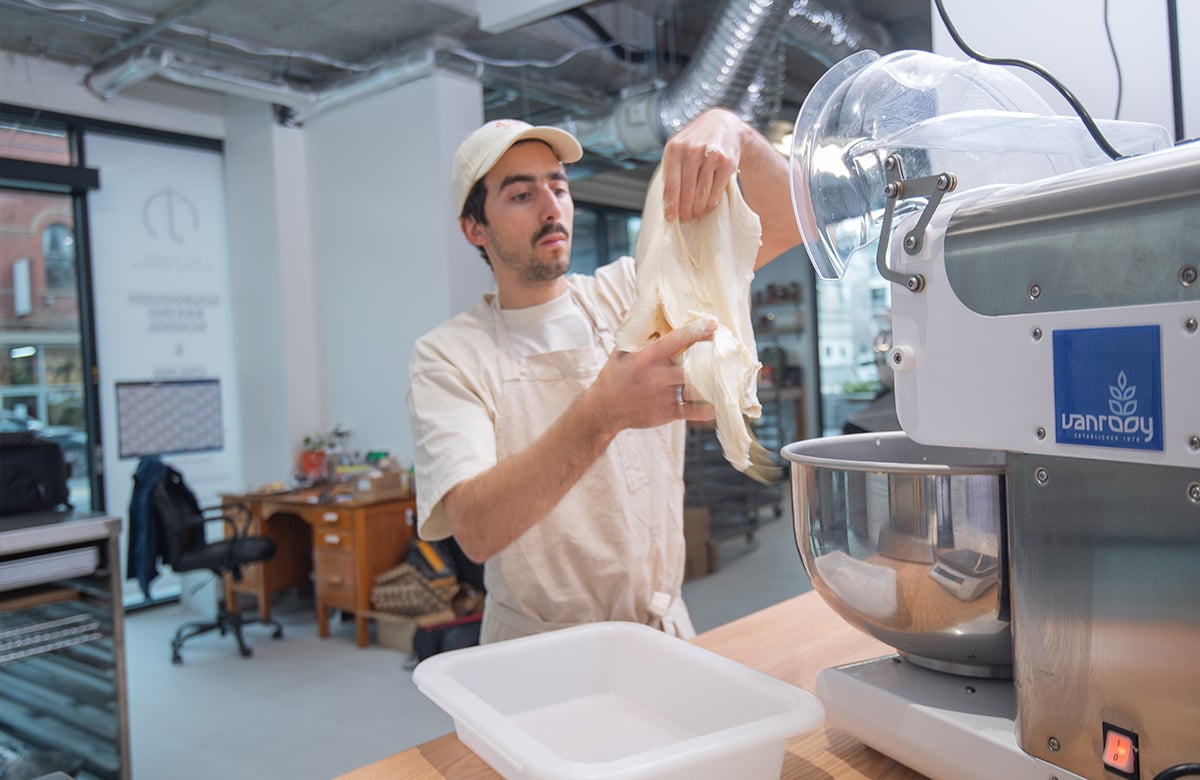
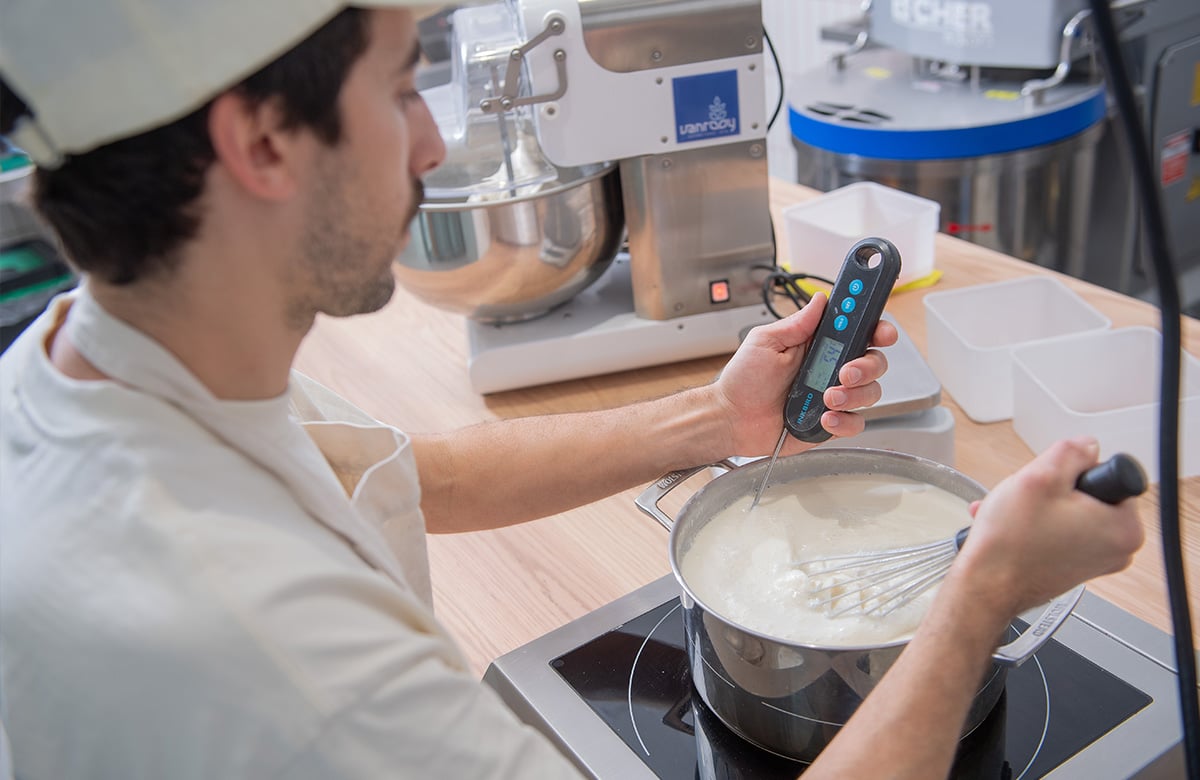
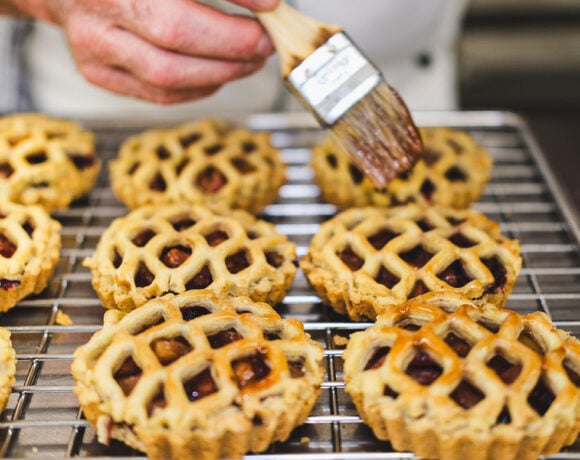




COMMENTS